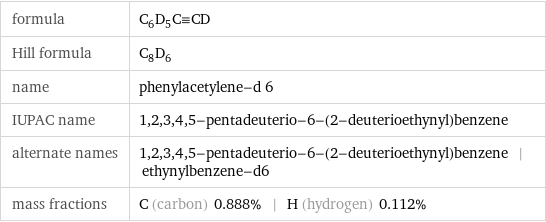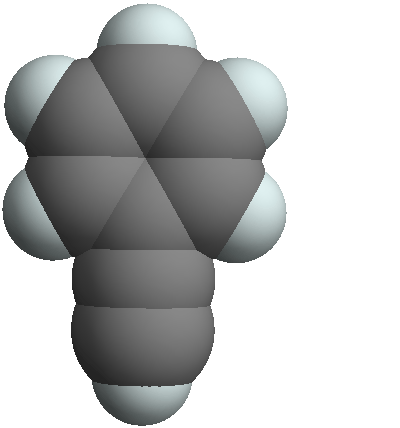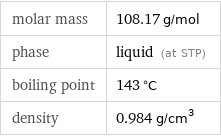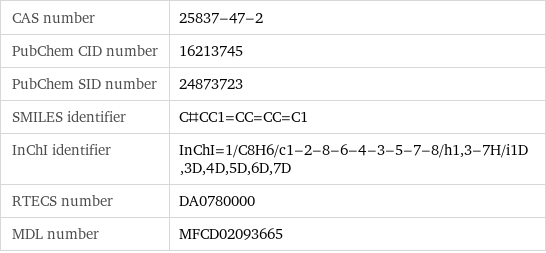Input interpretation

phenylacetylene-d 6
Chemical names and formulas

formula | C_6D_5C congruent CD Hill formula | C_8D_6 name | phenylacetylene-d 6 IUPAC name | 1, 2, 3, 4, 5-pentadeuterio-6-(2-deuterioethynyl)benzene alternate names | 1, 2, 3, 4, 5-pentadeuterio-6-(2-deuterioethynyl)benzene | ethynylbenzene-d6 mass fractions | C (carbon) 0.888% | H (hydrogen) 0.112%
Lewis structure

Draw the Lewis structure of phenylacetylene-d 6. Start by drawing the overall structure of the molecule, ignoring potential double and triple bonds: Count the total valence electrons of the carbon (n_C, val = 4) and hydrogen (n_H, val = 1) atoms: 8 n_C, val + 6 n_H, val = 38 Calculate the number of electrons needed to completely fill the valence shells for carbon (n_C, full = 8) and hydrogen (n_H, full = 2): 8 n_C, full + 6 n_H, full = 76 Subtracting these two numbers shows that 76 - 38 = 38 bonding electrons are needed. Each bond has two electrons, so in addition to the 14 bonds already present in the diagram add 5 bonds. To minimize formal charge carbon wants 4 bonds. Identify the atoms that want additional bonds and the number of electrons remaining on each atom: Fill in the 5 bonds by pairing electrons between adjacent highlighted atoms. Note that the six atom ring is aromatic, so that the single and double bonds may be rearranged: Answer: | |
3D structure

3D structure
Basic properties

molar mass | 108.17 g/mol phase | liquid (at STP) boiling point | 143 °C density | 0.984 g/cm^3
Units

Liquid properties (at STP)

density | 0.984 g/cm^3 refractive index | 1.457
Units

Non-standard atom properties

H-2 | 6
Chemical identifiers

CAS number | 25837-47-2 PubChem CID number | 16213745 PubChem SID number | 24873723 SMILES identifier | C#CC1=CC=CC=C1 InChI identifier | InChI=1/C8H6/c1-2-8-6-4-3-5-7-8/h1, 3-7H/i1D, 3D, 4D, 5D, 6D, 7D RTECS number | DA0780000 MDL number | MFCD02093665
Safety properties

flash point | 31.11 °C